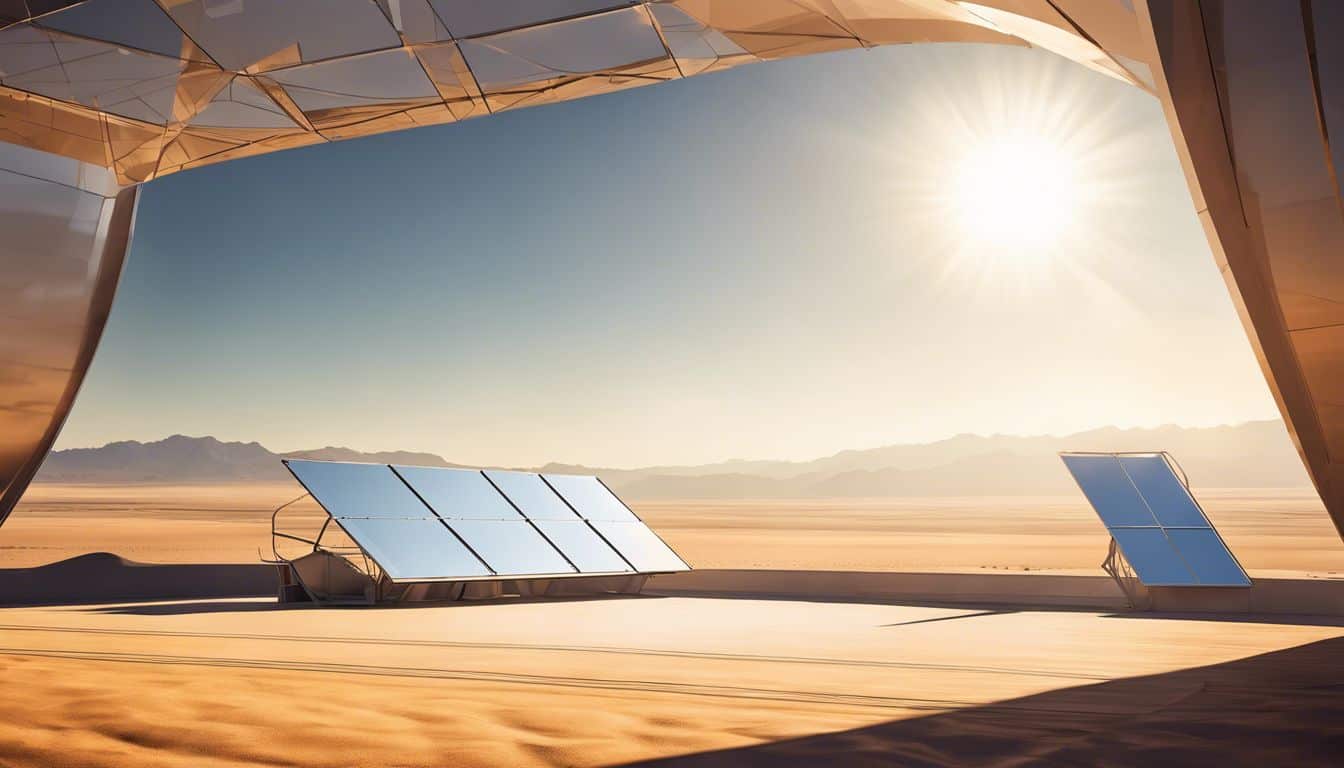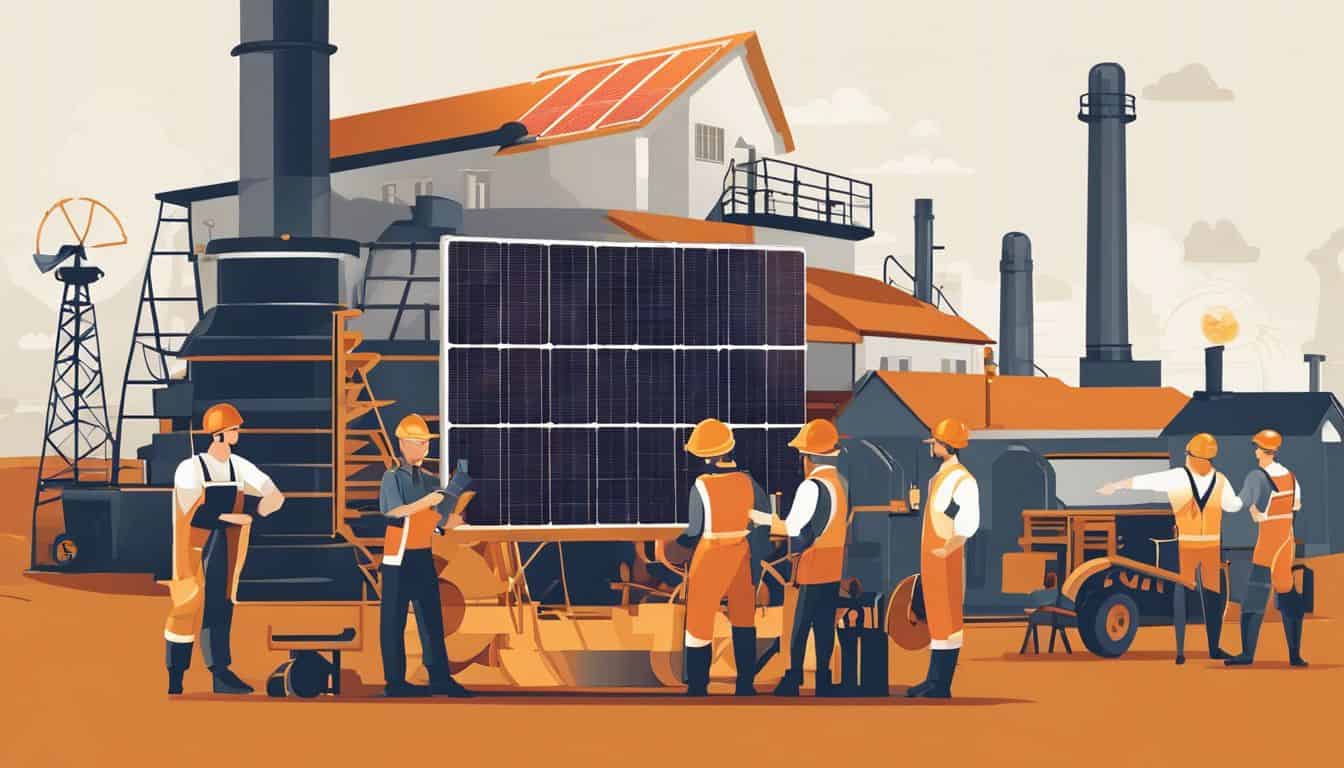Concentrated Solar Power (CSP) technology has emerged as a promising solution for sustainable and renewable energy sources. This article traces the fascinating journey of CSP from its ancient origins to its current state as a cutting-edge renewable energy technology, highlighting key milestones and innovations along the way.
Ancient Origins
The concept of concentrating solar energy dates back to ancient times. Greek and Roman civilizations used polished bronze shields to focus sunlight and start fires as early as 214-212 BC. Perhaps the most famous ancient application of solar concentration is attributed to Archimedes, who allegedly used an array of bronze shields to set fire to enemy ships during the Siege of Syracuse. While the historical accuracy of this account is debated, it demonstrates an early understanding of the power of concentrated sunlight.
Early Modern Developments (19th Century)
The 19th century saw significant advancements in harnessing solar energy. In 1866, French mathematician Auguste Mouchout developed a parabolic trough collector coupled with a steam engine, marking one of the first practical applications of CSP technology. Mouchout’s work culminated in a solar-powered printing press display at the 1878 Paris Exhibition, showcasing the potential of solar energy for industrial applications.
Industrial Era Advancements (Early 20th Century)
The early 20th century saw the first large-scale applications of CSP technology. In 1912, American engineer Frank Shuman constructed a solar power plant in Meadi, Egypt, using parabolic troughs to power irrigation pumps. This project demonstrated the viability of CSP for practical, large-scale energy production in sun-rich regions.
Mid-20th Century Breakthroughs
The mid-20th century marked a turning point in CSP development. In 1968, Italian engineer Giovanni Francia built the first operational CSP plant in Sant’llario, Italy, introducing the concept of a central receiver system. This innovation paved the way for more efficient and scalable CSP designs.
Modern CSP Era (Late 20th Century)
The late 20th century saw rapid advancements in CSP technology. The Solar One project in the USA, launched in 1982, was a groundbreaking 10MW central-receiver plant demonstrating utility-scale CSP’s potential. This was followed by the world’s largest solar thermal facility in Kramer Junction, California, in 1986. The Solar Two project (1996-1999) further advanced the field by showcasing efficient energy storage capabilities, a crucial feature for addressing the intermittency of solar power.
Global Expansion (Early 21st Century)
The early 21st century witnessed a global expansion of CSP technology. Spain and the USA emerged as leaders in CSP deployment, with numerous large-scale plants coming online. This period also saw the emergence of new markets in countries like Algeria, Australia, Egypt, and India, highlighting the global potential of CSP technology.
Technological Advancements
Significant technological advancements have been made in CSP in recent years. Improvements in mirror and heliostat designs have increased efficiency, while the development of advanced heat transfer fluids and thermal storage systems has enhanced the reliability and dispatchability of CSP plants. These innovations have played a crucial role in improving the energy security aspects of concentrated solar power, making it a more viable option for baseload power generation.

Current State and Future Outlook
Today, CSP technology continues to evolve rapidly. The latest innovations in concentrated solar power include advanced materials for receivers and storage systems, improved tracking systems for heliostats, and integration with other technologies such as desalination plants.
One of the most promising developments is the synergy of concentrated solar power with other renewable energy sources. By combining CSP with technologies like photovoltaics or wind power, it’s possible to create more reliable and efficient renewable energy systems.
Despite challenges such as high initial costs and water usage concerns, the future of CSP looks bright. As technology improves and costs decrease, CSP is poised to play an increasingly important role in the global renewable energy mix, particularly in regions with abundant solar resources.

Conclusion
The evolution of Concentrated Solar Power technologies represents a remarkable journey from ancient solar concentrators to modern, utility-scale power plants. This progression showcases human ingenuity in harnessing the sun’s energy and highlights the potential for future innovations.
As we continue to seek sustainable energy solutions, CSP stands out as a technology with significant potential to contribute to a cleaner, more sustainable energy future. With ongoing research and development, CSP is likely to become an even more crucial component of our global energy landscape in the future.
FAQS
How long have people been harnessing solar energy for power?
The history of solar energy utilization spans centuries:
- Ancient civilizations used polished shields and mirrors to concentrate sunlight for starting fires
- In the 19th century, inventors like Augustin Mouchot developed early solar-powered steam engines
- Frank Shuman’s solar thermal power station in Egypt, built in 1913, was a significant milestone
- These early efforts laid the groundwork for the modern concentrated solar power technologies we see today
What are the key components of a concentrated solar power (CSP) system?
A typical CSP system consists of several main elements:
- Mirrors or lenses that concentrate sunlight onto a receiver
- A receiver that collects the focused solar energy and converts it into heat
- A heat transfer fluid, such as molten salt or synthetic oil, that carries the heat to a power generation system
- A power generation system, usually a steam turbine, that converts the heat into electricity
- A thermal storage system that allows excess heat to be stored for later use
How does CSP differ from traditional photovoltaic (PV) solar panels?
CSP and PV solar technologies harness the sun’s energy in different ways:
- PV panels directly convert sunlight into electricity using semiconductor materials
- CSP systems concentrate sunlight to generate heat, which is then used to drive a turbine and produce electricity
- CSP can store thermal energy for later use, allowing for electricity generation even when the sun isn’t shining
- PV panels are more suitable for small-scale, distributed applications, while CSP is typically used in larger, utility-scale projects
What advancements have been made in CSP technology in recent years?
Modern CSP technologies have seen significant improvements in efficiency and cost-effectiveness:
- Advanced materials and coatings for mirrors and receivers have increased solar reflectivity and thermal stability
- New heat transfer fluids, such as molten salts and supercritical CO2, can operate at higher temperatures and pressures, boosting power cycle efficiency
- Improved thermal storage systems allow for longer-duration energy storage, extending the operating hours of CSP plants
- Intelligent control systems and predictive maintenance algorithms optimize plant performance and reduce downtime
What role does CSP play in the transition to a sustainable energy future?
CSP has the potential to be a key player in the shift towards clean, renewable energy:
- By harnessing the sun’s abundant energy, CSP can help reduce reliance on fossil fuels and mitigate greenhouse gas emissions
- CSP’s ability to store energy makes it a valuable complement to intermittent renewables like wind and PV solar
- The dispatchable nature of CSP allows it to provide reliable, on-demand power, even during peak evening hours
- As CSP technologies continue to advance and costs decline, it will become an increasingly competitive and attractive option for utilities and investors looking to expand their renewable energy portfolios

Leave a Reply